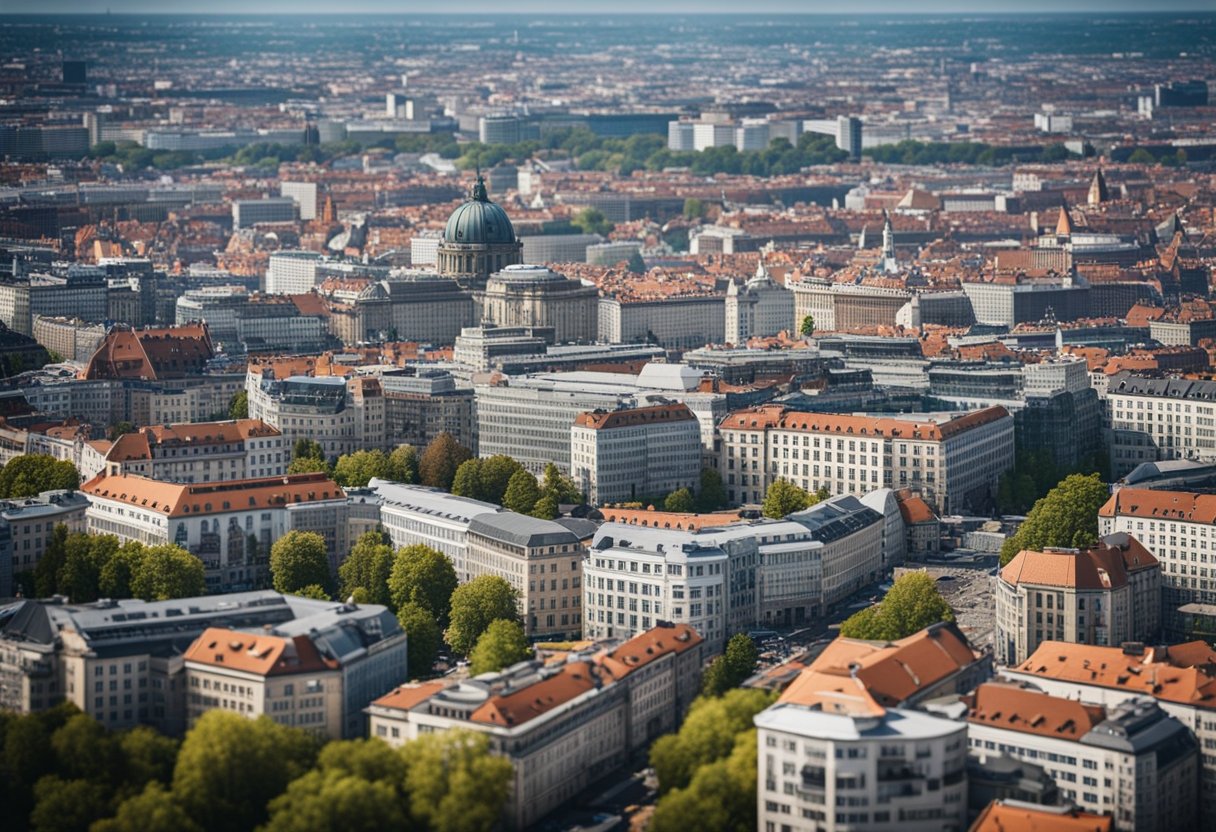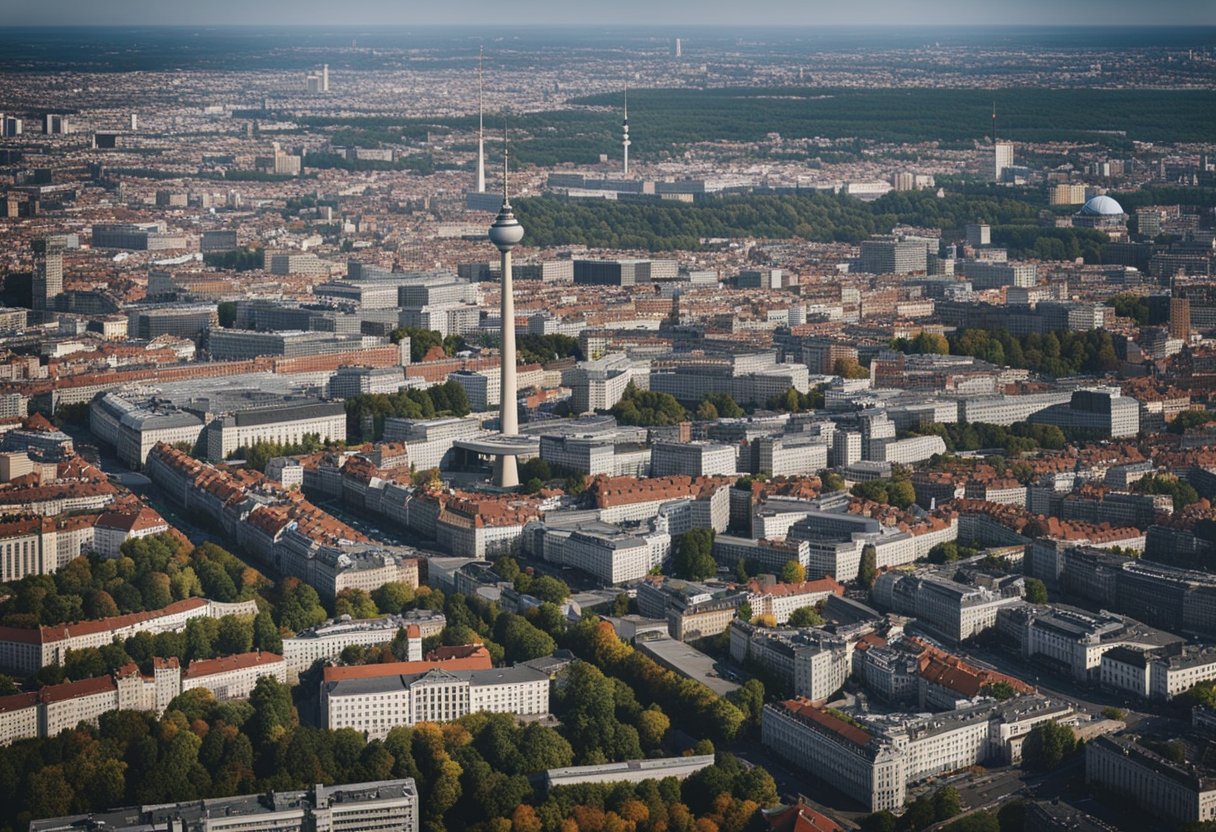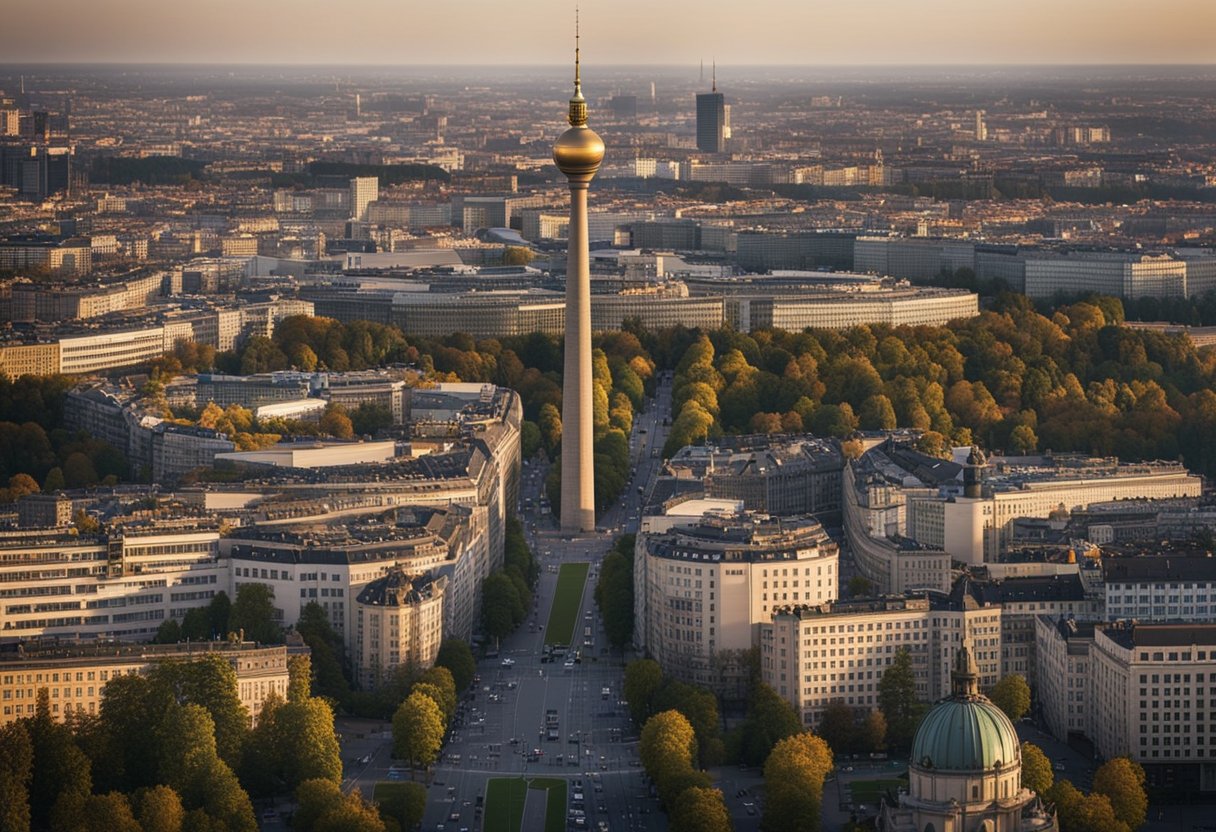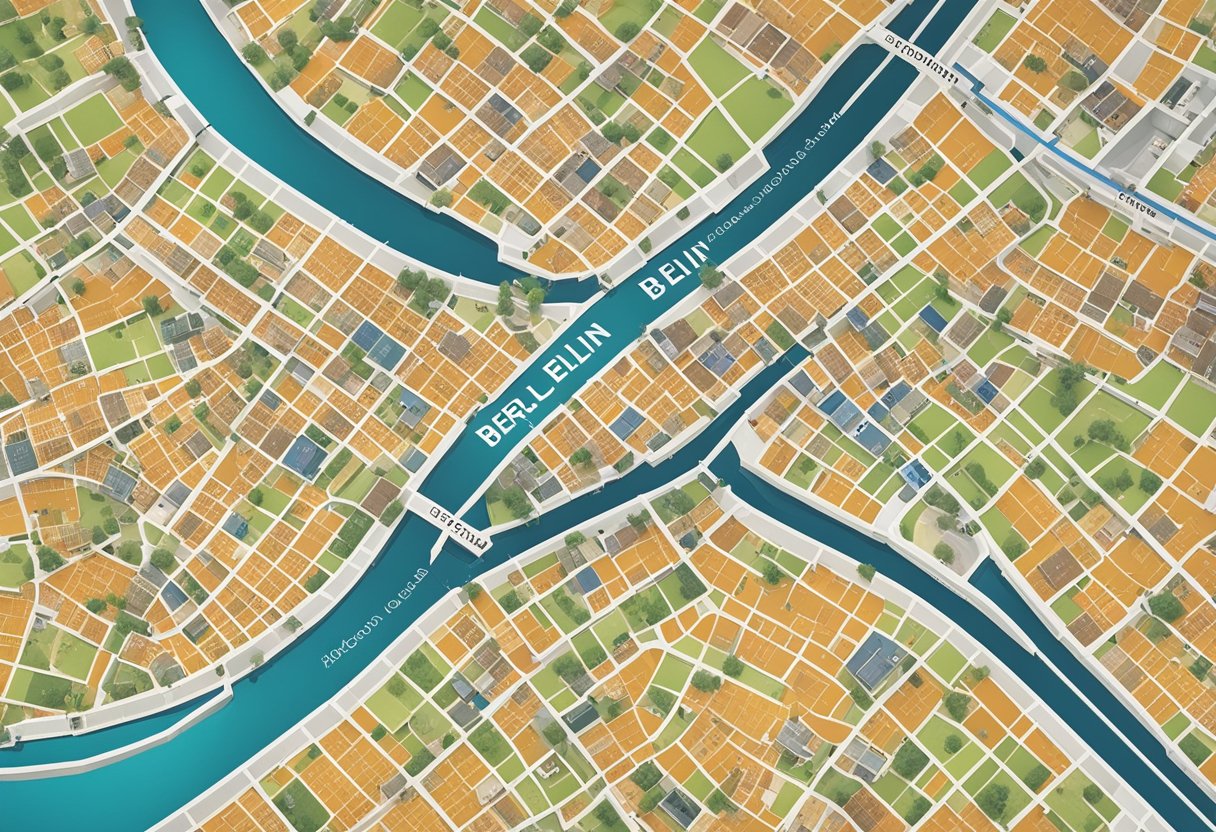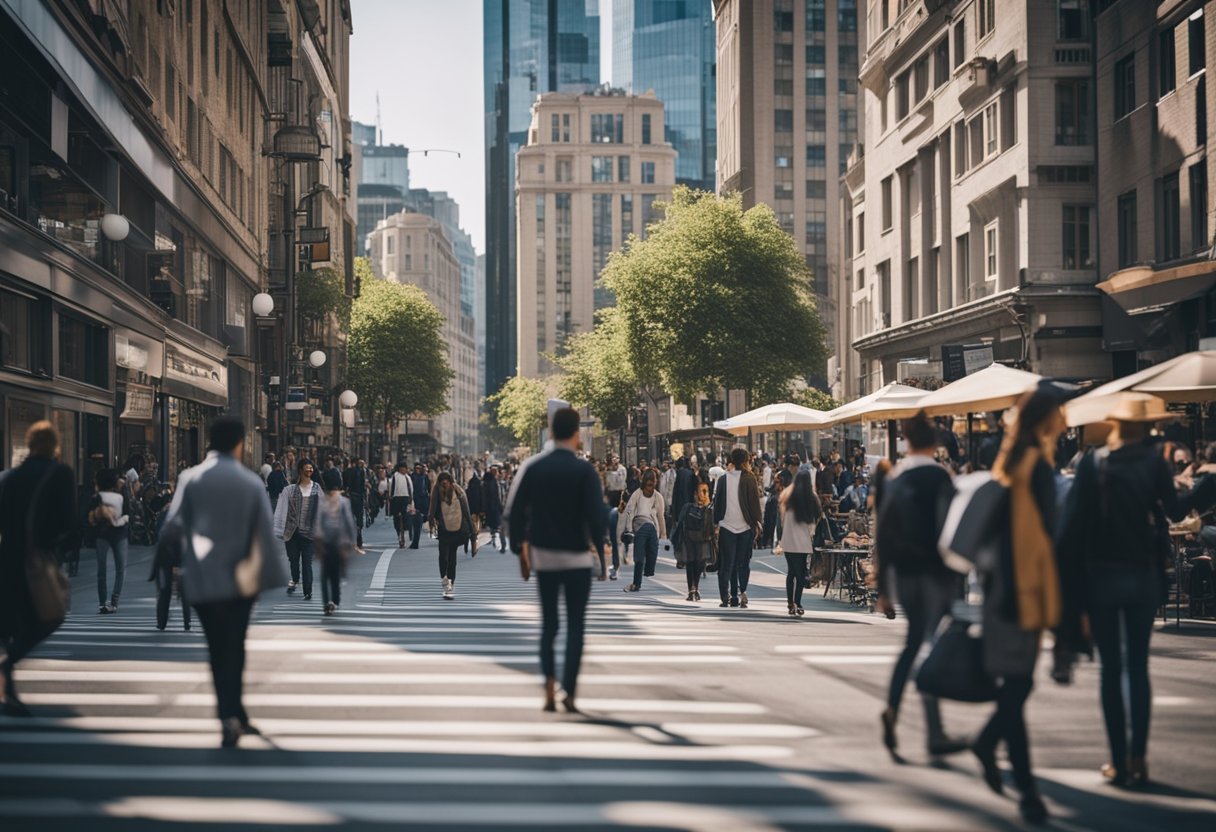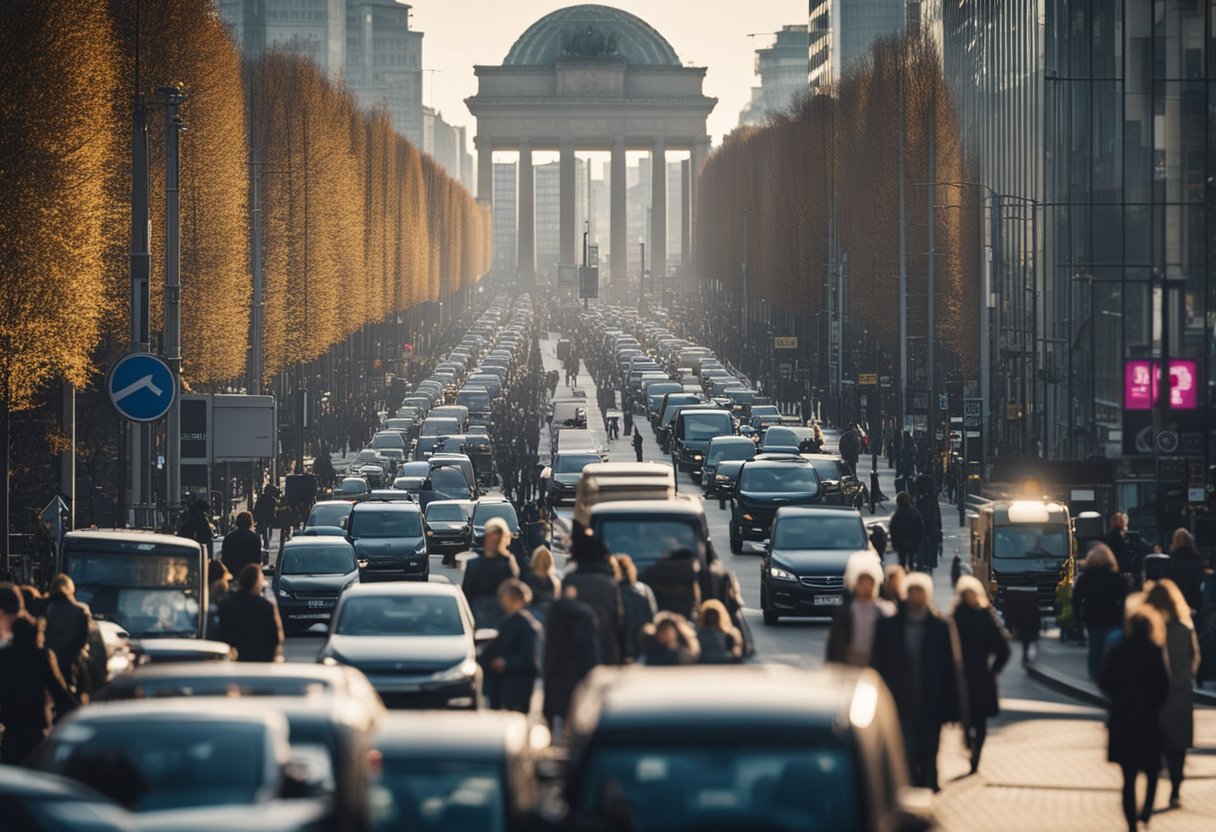Berlin, Germany’s largest city and the most populous city proper in the European Union, is notable for Berlin population density, an essential aspect of its urban geography and planning.
The city’s area encompasses diverse neighborhoods, from bustling business districts to quiet suburbs, each contributing to the overall Berlin population density.
As of recent statistics, the density of Berlin is a defining characteristic, setting it apart from other German cities and even major urban centers across Europe.
The distribution of Berlin’s inhabitants is not uniform throughout the city. Central districts boast a significantly higher density, with a blend of residential and commercial zones compactly arranged.
This leads to an array of social and economic interactions, characteristic of a densely populated metropolis. Meanwhile, on the city outskirts, the density tends to decrease, with more open spaces and residential areas.
These variations reflect Berlin’s complex urban structure and the influences of its history on population distribution. The ever-changing demographic trends continue to shape life in Berlin, impacting everything from housing policies to public transportation systems.
Demographic Overview- Berlin Population Density
Berlin’s demographic landscape is characterized by data fluctuating through historical events like World War II and German reunification, population register changes, and a diverse composition of inhabitants.
Historical Population Changes
Berlin’s demographic history reflects the impacts of significant events. In the aftermath of World War II, the population saw dramatic changes due to the conflict’s devastation.
Following the fall of the Berlin Wall and subsequent German reunification in 1990, the city experienced demographic shifts as it adapted to the reunified nation’s new socio-political paradigm.
These historical movements are evident in the number of registered residents, births, and deaths registered within the city’s archives.
Population Register Data
Population register data provides insights into the city’s fluctuating numbers. Each year, records of births and deaths paint a picture of Berlin’s changing population.
The data chronicles the slight growth or decline in inhabitants, which over time, has influenced the current Berlin population density.
Population Composition
Berlin’s population composition is as diverse as its history. The city is home to a large number of foreign residents, representing various nationalities.
This multitude of cultures contributes to the demographic makeup, with males and females almost equally present and the average age reflecting a city that’s both historic and youthful. Various districts within Berlin exhibit unique demographic profiles, emphasizing the heterogeneity of its inhabitants.
The demographic overview of Berlin illustrates a city with a dense and dynamic population shaped by history, ongoing demographic data collection, and a composition reflective of its global stance.
Geographical Distribution- Berlin Population Density
Berlin’s population is not evenly spread across its land area. The city exhibits a variety of population densities within its districts and boroughs, significantly influenced by urban development and the metrics used to measure density.
Districts and Boroughs
Berlin is divided into several districts, each with multiple boroughs, which in turn encompass diverse neighborhoods. For example, the central district of Mitte is home to historic landmarks and government buildings, contributing to its high desirability and resulting density.
In contrast, the borough of Spandau located on the city’s outskirts, combines both densely populated areas and more spread-out suburbs. Other districts like Neukölln and Kreuzberg are known for their vibrant culture and younger populations, while boroughs such as Steglitz and Schöneberg tend to have more residential areas.
Urban Development and Density
Urban development has a direct impact on population density in Berlin. Construction activity and development policies in areas like Tegel and Lichtenberg have led to a fluctuation in local densities.
The rise of new housing projects and commercial centers influences the spread of the population, with some areas experiencing a surge due to new attractions and amenities. Köpenick, known for its blend of historic charm and natural landscapes, also faces changes with ongoing urban development.
Area and Density Metrics
The area of Berlin spans approximately 883 km², with the population density varying across the city. Berlin Population Density is typically measured by the number of people living per hectare.
In the densely populated inner-city areas, this figure is higher compared to the outlying districts. For instance, in 2018, the population density of Berlin’s urban area was 42 people per hectare. This metric not only reflects the number of inhabitants but also the urban planning and availability of living space within the city state’s territory.
Statistical Data and Analysis- Berlin Population Density
In this section, comprehensive statistical data provide insights into Berlin population density, revealing trends and offering benchmarks for comparison with other cities.
Berlin Population Density Development
The development of Berlin population density has been the subject of extensive data analysis. Since 1995, there has been a notable change in the population figures, which have fluctuated and affected the city’s overall population density.
For instance, according to data from Statista, Berlin population density was recorded at 4,214 people per square kilometer in 2022, highlighting an increase from previous years.
Average Density and Comparisons
The average Berlin population density offers a benchmark for comparing Berlin to other urban areas. Berlin’s urban area has a population density of 42 people per hectare, placing it in the middle range when compared with other German and European cities.
Comparisons show that, relatively, Hamburg has an average of 39% fewer people per hectare, whereas inner-city Paris has nearly twice the population density of Berlin’s inner city. These comparisons are crucial for urban planning and development strategies, as they put into perspective the density challenges and advantages a city like Berlin faces.
Cultural and Social Aspects
Berlin’s cultural and social fabric is as dense as its population, with a vibrant mix of native citizens and a considerable foreign populace enriching the city’s community dynamics.
Foreign Population and Citizenship
Berlin is characterized by a significant foreign population, with people from over 180 countries calling the city home. This diversity has profound implications on Berlin’s society, shaping everything from culinary offerings to linguistic landscapes.
In 2016, the city’s population included 3.5 million people, evidencing a slight increase from previous years. A substantial portion of Berlin’s demographic comprises of non-German citizens, reflecting on the multicultural nature of urban life.
Community and Family Dynamics
Family life in Berlin is marked by a blend of traditional structures and modern livelihoods. While families remain a cornerstone of society, Berlin’s dynamic urban environment also fosters a range of alternative and non-traditional community arrangements.
Societal norms in Berlin are reflective of a state that values inclusivity and adaptability, accommodating the various lifestyles of its inhabitants. Moreover, with 40% of the population younger than 35 years, the city’s social institutions are continuously evolving to meet the needs of its youthful demographics.
Municipal Governance
The governance of Berlin intricately ties the city’s administrative framework to its population distribution. Each of Berlin’s neighborhoods and boroughs is managed through a structured political hierarchy that ensures effective local governance.
Administrative Divisions
Berlin is divided into several boroughs known as “Bezirke,” each of which acts as its own municipality within the larger metropolis. There are currently twelve such boroughs, ranging from central locations like Mitte to more peripheral ones such as Marzahn-Hellersdorf.
Each borough is responsible for local administrative tasks and is governed according to municipal law. Berlin.de offers a detailed overview of population density across these boroughs, hinting at the diversity within the city’s urban landscape.
Governing Entities
The primary governing entities within each borough are the Bezirksamt (District Office) and the Bezirksverordnetenversammlung (District Assembly).
The Bezirksamt operates with a district mayor and district councillors who are elected by the District Assembly. Within the broader scope of municipal governance, the Governing Mayor of Berlin presides over the city, playing a pivotal role in citywide decisions that impact all boroughs.
A reflection of this governance system and its elected officials can be seen in the composition of the district board reported by Wikipedia.
Collectively, these entities ensure that Berlin’s population density is diligently managed through municipal governance, keeping the needs of the city’s diverse inhabitants at the forefront of local policies and development strategies.
Economic Factors
Berlin’s economic landscape is significantly influenced by its population density, as higher density often correlates with increased economic activity.
The city’s economic health is reflected in its Gross Domestic Product (GDP) and employment rates, while the quality of infrastructure and services demonstrates how well it supports and sustains commercial activities.
GDP and Employment
Berlin’s economy is characterized by a diverse mix of industries, with a strong presence in the service sector. The city’s GDP has shown growth patterns that relate to fluctuations in population density.
Employment opportunities tend to be concentrated in areas with higher population densities, where businesses can capitalize on a larger customer base and a readily available workforce. In 2022, Berlin population density was of 4,214 people per square kilometer, aligning with its role as an economic hub.
Infrastructure and Services
Infrastructure development in Berlin reflects the demands of a dense urban population. Investments in public transport, energy, and digital networks facilitate commerce and service delivery.
Essential services such as healthcare, education, and retail are structured to accommodate the needs of a densely populated city. Such services are not only crucial for the welfare of residents but also for supporting economic activities that contribute to the city’s GDP.
Education and Integration
In the context of Berlin’s notable population density, the city’s educational framework and integration services are fundamental in fostering an inclusive society.
These entities play a critical role in ensuring residents from diverse backgrounds have access to opportunities for growth and involvement in the community.
Educational Institutions
Berlin’s extensive network of educational institutions is essential to the city’s social fabric. From public to private schools, universities, and vocational training centers, the city offers a range of options for its inhabitants.
The presence of over 40 higher education establishments, including the globally recognized Humboldt University of Berlin, reinforces the city’s commitment to academic excellence and innovation.
The primary and secondary schools ensure that education is accessible from a young age, which is crucial for promoting long-term cultural integration and societal participation.
Integration Services
The city’s integration services are tailored to assist newcomers in adapting to life in Berlin. Given the high population ratio of residents with an immigration background, the availability of language courses, legal assistance, and cultural orientation programs is a testament to the city’s inclusive approach.
These services not only facilitate language acquisition and cultural understanding but are also instrumental in connecting individuals with education and employment opportunities. Government initiatives and non-profit organizations work in concert to provide pathways for successful integration into Berlin’s dynamic community.
Urban Landmarks
Berlin’s urban landmarks reflect the city’s dense population and its historical and cultural significance. These landmarks often serve as hubs of activity and are integral to the city’s identity.
Famous Districts and Squares
The city center of Berlin is marked by its iconic Unter den Linden, a grand boulevard lined with notable buildings and institutions that reflects Berlin’s historic status and urban development.
Not far from there, Potsdamer Platz is a prime example of modern urban renewal, being a major public square and traffic intersection that attracts both tourists and locals alike.
Parks and Recreation Spaces
Among Berlin’s green escapes, Zoologischer Garten is not only a beloved recreational space but also an important landmark. It is one of the oldest zoos in Germany, surrounded by gardens and the adjacent Tiergarten.
Meanwhile, Park am Gleisdreieck highlights the city’s adaptive reuse of space, transforming former railway lands into a popular urban park for leisure and community activities, which symbiotically manages the population density by providing open spaces for residents.
Frequently Asked Questions
Berlin’s population density is a topic of interest for many, especially considering the city’s dynamic changes since the end of the 20th century. These FAQs delve into the specifics of Berlin’s population distribution and its comparison with other cities.
How has Berlin’s population density changed over recent years?
Recent data indicates that around 3.6 million people resided in Berlin at the end of 2018, with changes in population density reflecting urban development and housing trends. Historical fluctuations are documented, with periods of growth and decline impacting density.
Which districts in Berlin have the highest population density?
Certain central districts in Berlin, such as Mitte, Friedrichshain-Kreuzberg, and Neukölln, demonstrate higher population densities. These areas are characterized by their urban infrastructure and appeal to residents seeking proximity to amenities.
What factors contribute to the population density distribution in Berlin?
Population density distribution in Berlin is influenced by myriad factors including housing availability, economic opportunities, social infrastructure, and historical development patterns. Urban planning and public policy also play significant roles.
How does Berlin’s population density compare to other major cities in Germany?
With a population density of 42 people per hectare, Berlin ranks in the middle range among German cities, with Hamburg having a notably lower density. European capitals such as Paris exhibit nearly twice the density in their core areas.
In terms of population density, how do Berlin’s immigrant populations impact the city?
Berlin’s immigrant populations contribute to the city’s diversity and have implications for population density, with certain neighborhoods experiencing higher density due in part to the immigrant communities that have settled there.
What are the trends in Berlin’s population density since the fall of the Berlin Wall?
Since the fall of the Berlin Wall, the city’s population dynamics have seen significant shifts. Reunification prompted migration trends and urban development that affected both the distribution and density of Berlin’s population.
